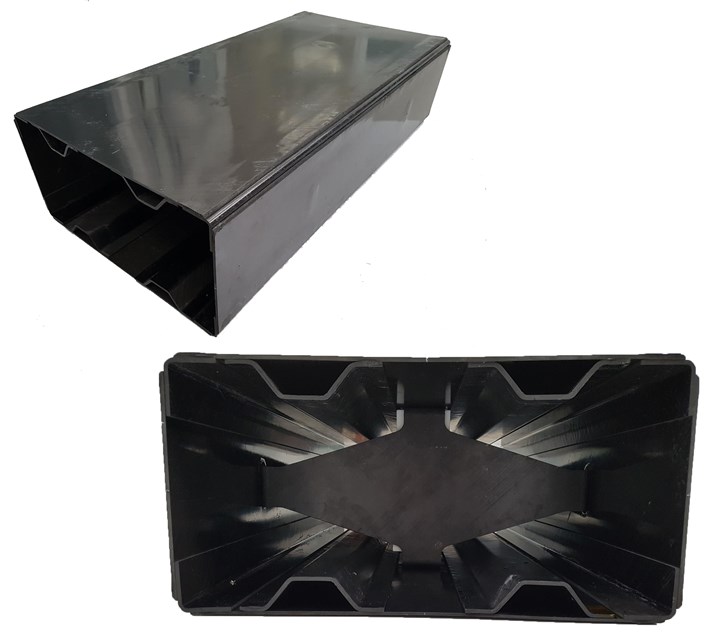Welded thermoplastic composite keel beam demonstrator achieved
EURECAT and partner companies complete Clean Sky 2 KEELBEMAN project, demonstrating TRL3 primary structure technology for future aircraft.

Thermoplastic composite keel beam demonstrator, scale 1:1 transverse section and 1 meter in length, completed in Clean Sky 2 KEELBEMAN project. SOURCE | EURECAT.
At the end of February 2020, the project with acronym KEELBEMAN has successfully concluded. Funded by the European Commission in the framework of the Clean Sky 2 Public-Private Partnership within the EU Horizon 2020 program, the KEELBEMAN project goal was to complete design and manufacturing of a thermoplastic composite keel beam section for an Airbus A320-type aircraft to validate the technology at technology readiness level TRL3.
The KEELBEMAN project addressed the design and manufacture of a full component via a keel beam section demonstrator, using thermoplastic matrix resin reinforced with carbon fiber. The use of manufacturing technologies with significant potential for automation were explored and selected combinations were demonstrated at TRL3.
Under the technical lead of CETMA (Brindisi, Italy), an R&D center highly specialized in composite processing and characterization, a novel continuous compression molding (CCM) process was used to manufacture the skins and the stringers of the keel beam section. CCM is a very fast process, one of the most promising for manufacturing very long thermoplastic composite parts, and CETMA is one of the leading providers of this technology in Europe.
Stiffening ribs were produced using more conventional non-isothermal compression molding by the project coordinator EURECAT, a leading research center located in Barcelona, Spain. Skins, stringers and ribs were assembled using CETMA’s patented induction welding technology.
These manufacturing technologies were complemented by the contributions from two additional KEELBEMAN project partners:
- , a French engineering company, carried out the keel beam re-design from metal to composite with no rivets, starting from the metallic baseline defined by Clean Sky 2 topic manager Airbus (Toulouse, France) and defined the architecture and thickness according to calculations from structural and manufacturing process analysis.
- , a leading Spanish TIER 2 supplier for aerostructures, focused on the detailed definition and implementation of ultrasonic nondestructive inspection (NDI) of coupons, subcomponents and the final demonstrator, based on Airbus standards and the particularities of welded thermoplastic composite structures.
Related Content
-
Rocket Lab begins installation of large AFP machine for rocket production
The 99-ton AFP machine, custom-designed and built by Electroimpact, is claimed to be the largest of its kind, expecting to save around 150,000 manufacturing hours in the Neutron rocket’s production process.
-
Sinonus launches energy-storing carbon fiber
Swedish deep-tech startup Sinonus is launching an energy-storing composite material to produce efficient structural batteries, IoT devices, drones, computers, larger vehicles and airplanes.
-
NCC receives investment to support next-gen composite wing
The NCC was awarded a £15.8 million U.K. government grant for HRMCap to de-risk, accelerate innovation in high-rate large aerocomposites structure manufacturing.






